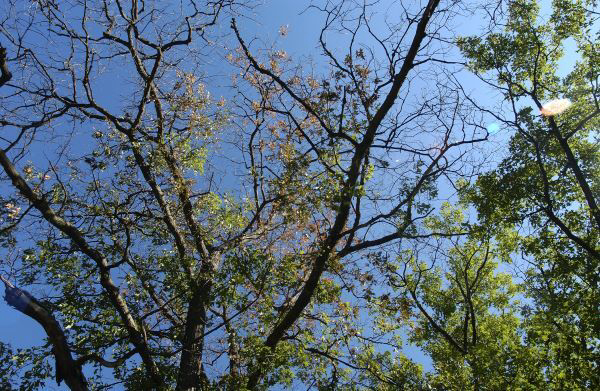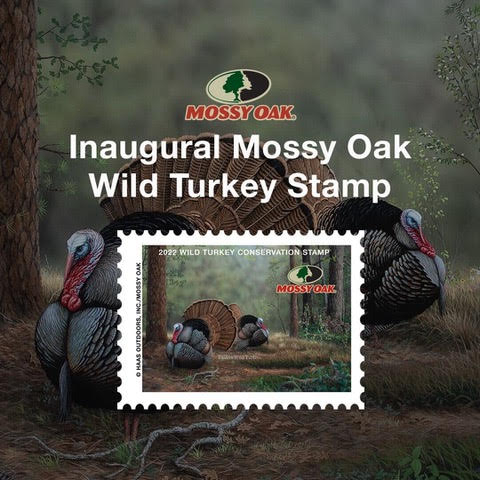Michigan’s Wild Turkey Success Story Continues
When Michigan began rebuilding its wild turkey population in the 1950s, Allegan County was the center of the effort. Birds were brought in from Pennsylvania and were released there. But as the population grew and expansion became a possibility, Michigan wildlife managers began looking north.
“A long time ago it was thought that turkeys needed 10,000 acres of contiguous woods with oak trees as large as you could put your arms around,” said Al Stewart, the upland game bird program leader with the Department of Natural Resources. ”At that time, short of the Allegan area, northern Michigan showed a lot of promise.”
Areas such as Baldwin and Mio were selected as potential release sites because they had big blocks of lands with mast-bearing trees.
“When we put birds up there in the ‘60s, those were the sites that were considered to be the best,” Stewart said. ”Over time we realized that turkeys were more resilient to habitat types such as we had in southern Michigan, more open lands.
“But it wasn’t until the 1980s that we decided to really expand turkey populations across the state and that’s when we decided to restore turkey numbers south of that line from Bay City to Muskegon. And at the same time, we began to actively move birds around in northern Michigan.”
Fast forward to today and southern Michigan is now where the bulk of Michigan’s wild turkey population lives. Birds in northern Michigan have not fared as well.
“In both the Mio area and the Baldwin area – some of our traditional strongholds of turkeys – the birds have been in decline over the last five to eight years,” Stewart said. “There are still oak trees there and winters haven’t been any more severe than in the past, but numbers are still dwindling a bit. Some of that has to do with poor nesting success, but the numbers were going down to lower than what we would consider optimum.”
The DNR has embarked on a mission to rebuild Michigan’s northern wild turkey populations. Over the last two years, Wildlife Division staff members have been trapping and transferring birds from thriving southern Michigan populations to northern Michigan.
“There are still good numbers of birds in northern Michigan, but from our hunter survey information, we’ve seen some decline in hunter satisfaction and hunter success,” Stewart said. “Those things kind of throw up a red flag for us. But we have the luxury to be able to respond to it; we have birds in southern Michigan, so we’re able to move them and revitalize the populations in that northern range.”
DNR staff from the Barry State Game Area recently completed a few successful trap-and-transfer operations, moving 25 birds – 22 hens and three toms – to the Baldwin area. The birds were trapped on private land in southern Michigan and moved to public land in Lake County. (Another six hens, trapped within the city limits of Norton Shores, were also relocated to the Baldwin area.)
Wildlife Division personnel scouted the farms around the Barry State Game Area and located several areas that were holding hundreds of birds. They approached the landowners for permission to trap and were warmly received.
“A lot of the farmers are willing to share the birds on their property,” said Randy Heinze, a DNR wildlife assistant in Barry County, who worked on the trapping project. “They get apprehensive when they see huge flocks of turkeys in their fields.
“One of the landowners said he just thought it was a neat project and was happy to let us take the birds.”
DNR wildlife biologist Sara Schaefer, who oversees the county, said there are more than enough birds in Barry County to spare some for northern Michigan.
“We have abundant flocks and the reproduction has been very good lately,” she said. “One of those places we trapped had more than 200 birds on it. The population is robust.”
Wildlife Division staff baited the fields with corn to concentrate the birds for trapping.
Using a compressed-air cannon, which dispatches a net, the staffers watched from a nearby blind until the birds were on the corn pile, then fired the net. They quickly collected the birds, boxed them, and trucked them to northern Michigan to the release sites.
It’s a tricky bit of timing as the birds are most easily trapped during winter – when the birds are in big flocks and come readily to corn — but the wildlife staff didn’t want to move the birds up north while there was still 2 feet of snow on the ground there. So the operation took place in March, when winter was beginning to ebb. It complicated the trapping a bit, but conditions on the ground in northern Michigan were more hospitable to relocated birds.
The recent trap-and-transfer operations coincide with habitat improvement projects in the area where the birds were released. For the last several years, DNR Wildlife Division staffers and volunteers from the Michigan Chapter of the National Wild Turkey Federation (NWTF) have been growing crabapple saplings from root stock at Rose Lake Wildlife Area and transplanting them in the northern turkey range to provide a winter food source.
Jim Maturen, co-founder of the Michigan Wild Turkey Hunters Association (MWTHA), said he’s glad to see the DNR move the birds up north.
“It’s a win-win situation,” Maturen said. “It shows the landowners in southern Michigan who perceive they have a problem that the DNR is doing something. And at the same time it shows they’re trying to do something for our situation up here.”
Tony Snyder, president of the Michigan Chapter of NWTF, described the partnership as “awesome.”
“We have long worked with the DNR to support wild turkey management in Michigan,” said Snyder, who has personally helped with trap-and-transfer operations. “It’s a great program.”
The DNR’s Stewart said that since the releases were primarily hens, he hopes they’ll add to reproduction in the area as well as add a bit of genetic diversity to the turkey population. Combined with crabapple plantings and additional habitat improvements by the DNR’s Forest Resources Division – which is trying to increase oak production — he’s optimistic that the transplanted birds will thrive in their new digs.
With spring rapidly approaching, it’s unlikely the DNR will be able to trap and transfer many more turkeys this year. But as long as there are robust populations in southern Michigan and landowners who are willing to share them, the opportunity exists to continue relocating birds in the future.
To learn more about wild turkey management, hunting opportunities and season information, visit the DNR website at www.michigan.gov/turkey.






